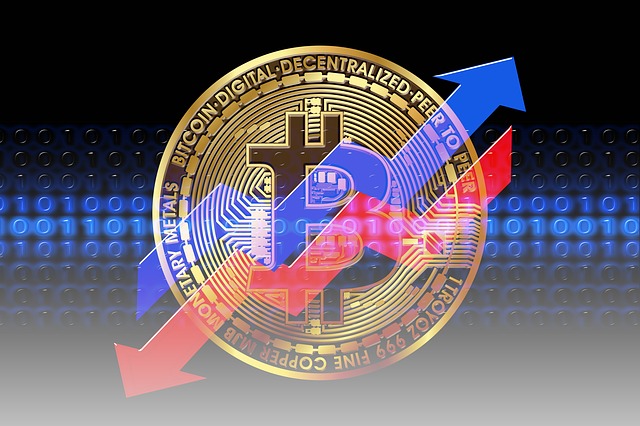A market maker in the crypto domain explains how market makers are solving problems like slippage and how they´re also furthering crypto adoption.
In any market condition, as buyers and sellers do their thing, several phenomena occur, giving rise to several players. One of them is a market maker. They are high-volume traders who make a market for securities by always standing at the ready to buy or sell.
For example, if a buyer seeks to buy 200 shares of Netflix, a seller with the exact supply may not be available. When there is too much of a gap between what buyers are willing to pay, and what sellers are willing to accept for their asset, a liquidity crisis occurs.
Enter market makers. They help to smooth out the wide variance that comes from a lack of buyer or seller activity, especially with respect to emerging projects. By providing liquidity and organizing its distribution by volume and prices, a market maker ensures healthier market conditions. As a result, market efficiency improves, and new investors can easily get in and out of assets at better conditions in terms of execution costs.
These makers of the market have been around for a while now, with over 2,000 market makers in the US and more than 100 in Canada as of October 2008. But now, cryptocurrencies have added a new playing field. How does it all work?
For token issuers, who are trying to encourage adoption of their token, volatility and illiquidity can drive people away. All of the reasons below could easily dissuade users from acquiring the token, and at the very least, negatively impact their user experience:
- If would-be adopters are hit with a material penalty (in the form of slippage) just to acquire the tokens
- The tokens are hard to acquire due to shallow order books
- If the value of acquired token holdings swings wildly
To find out more about this term with regards to the crypto front, The Tech Panda spoke to Guilhem Chaumont, CEO of Flowdesk. Flowdesk provides market-making solutions for spot and derivatives cryptocurrency markets, as well as liquidity infrastructures for exchanges and digital asset projects.

Guilhem Chaumont
In the case of cryptocurrencies, market-makers are especially important, as their innovative nature, combined with a market mainly driven by retail investors, lead to particularly non-liquid markets
Chaumont says that market makers are crucial in the case of cryptocurrencies.
“In the case of cryptocurrencies, market-makers are especially important, as their innovative nature, combined with a market mainly driven by retail investors, lead to particularly non-liquid markets. Token issuers often raise millions in their ICOs but are unable to offer decent trading conditions on secondary markets. In the past, this has often led to low volumes and high volatile markets, partially explaining the poor performance of most ICOs post-2017 bull run.
Market-making in Traditional Asset Markets and How it Differs in Crypto Markets
Chaumont explains that while being fundamentally the same, market making on digital vs. traditional assets is quite different and more complex to a certain extent.
“On traditional assets, market making is usually concentrated on a single venue and a single trading pair. The ecosystem is already well structured with reduced counterparty, execution, and legal risks,” he says.
While being fundamentally the same, market making on digital vs. traditional assets is quite different and more complex to a certain extent
“In crypto, we are still in an ecosystem at an infancy stage. The fundamental nature of crypto leads to a higher number of trading pairs across a significantly higher number of trading venues. Being quoted against still volatile assets such as Bitcoin or Ethereum, the pricing of crypto indexes is made more difficult with potential price discrepancies between exchanges and trading pairs,” he adds.
He also adds that the settlement of transactions is also much different, with clearing houses organizing both the trading and the settlement of derivatives.
How Market Making Solves Slippage
Slippage occurs when traders are forced to settle for a different price than what they sought initially because of a movement in price between the time the order (say for Bitcoin) enters the market and the execution of a trade. Too much slippage can cost frequent traders large sums of money.
In the near future, we believe that the gap between crypto and traditional finance will be progressively filled, increasing drastically the number of assets and therefore needs for scalable market making solutions
Chaumont explains that market makers solve this problem.
“In crypto markets, due to the low liquidity of the markets, slippage is also often used to describe execution costs due to liquidity. Market making solves these issues by offering higher and more consistent liquidity, increasing the likelihood of having a trade executed at its expected average price,” he says.
Market Making’s Role in Furthering Crypto Adoption
Market making has a central role in crypto adoption due to the use case of crypto still being financial and speculative at this stage. Chaumont elaborates,
“By improving liquidity and ensuring smaller and homogenous spreads, market making is improving the trading conditions of market participants. This is notably mandatory for institutional investors to either get in the crypto markets or extend their participation to a wider range of lower assets by market capitalization.”
By improving the trading conditions through market making, additional services can be built more easily, increasing the capacity of adoption by traditional participants
Market making is also the ultimate component of a wider execution chain for additional services such as brokering, hedging, or structuring.
“By improving the trading conditions through market making, additional services can be built more easily, increasing the capacity of adoption by traditional participants,” he says.
How Flowdesk Works
Flowdesk has built a comprehensive trading infrastructure centered around exchange connectivity and trade execution. They are mostly using this infrastructure to offer market-making solutions to our clients and are running proprietary trading feeds across more than 30 exchanges.
“The ambition is to keep on improving our market making models and offers, while leveraging our technology to launch new services. In the near future, we believe that the gap between crypto and traditional finance will be progressively filled, increasing drastically the number of assets and therefore needs for scalable market making solutions,” Chaumont says.
“By having a complete technological and operational setup, we offer plug-and-play crypto financial services to our clients with the highest level of security and regulatory compliance, which we believe, will be more and more important as the crypto-space becomes institutionalized,” he concludes.












